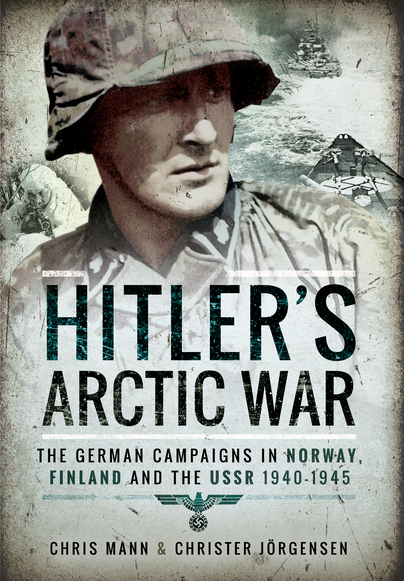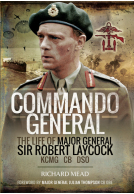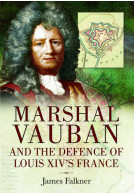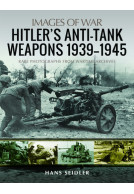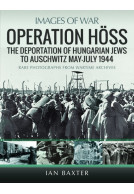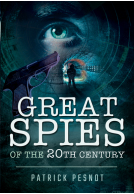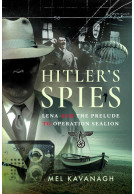Hitler’s Arctic War (Paperback)
The German Campaigns in Norway, Finland and the USSR 1940–1945
Imprint: Pen & Sword Military
Pages: 224
ISBN: 9781473884564
Published: 2nd November 2016
Last Released: 17th December 2021
(click here for international delivery rates)
Need a currency converter? Check XE.com for live rates
| Other formats available | Price |
|---|---|
| Hitler’s Arctic War ePub (26.4 MB) Add to Basket | £6.99 |
‘In the past the German General Staff had taken no interest in the military history of wars in the north and east of Europe. Nobody had ever taken into account the possibility that some day German divisions would have to fight and to winter in northern Karelia and on the Murmansk coast.’ (Lieutenant-General Waldemar Erfurth, German Army). Despite this statement, the German Army’s first campaign in the far north was a great success: between April and June 1940 German forces totalling less than 20,000 men seized Norway, a state of three million people, for minimal losses. Hitler’s Arctic War is a study of the campaign waged by the Germans on the northern periphery of Europe between 1940 and 1945.
As Hitler’s Arctic War makes clear, the emphasis was on small-unit actions, with soldiers carrying everything they needed – food, ammunition and medical supplies – on their backs. The terrain placed limitations on the use of tanks and
heavy artillery, while lack of airfields restricted the employment of aircraft.
Hitler’s Arctic War also includes a chapter on the campaign fought by Luftwaffe aircraft and Kriegsmarine ships and submarines against the Allied convoys supplying the Soviet Union with aid. However, Wehrmacht resources committed to Norway and Finland were ultimately an unnecessary drain on the German war effort. Hitler’s Arctic War is a ground-breaking study of how war was waged in the far north and its effects on German strategy.
Within the book there are many nuggets which should inspire.
Wargames Illustrated
As featured on...
The Russian Arctic Convoy's Club 21st Century
Well illustrated and organised, this volume shows that while the war in this region was an unavoidable adjunct to the main fighting to the south, it also diverted resources the Germans could ill afford to lose. The authors effectively explain how soldiers dealt with the arctic conditions and the extensive hardships they endured while fighting at the top of the Continent. The book is a good general history of the various operations in Norway, Finland, and the Soviet Union during the war.
WWII History magazine, August 2017 – reviewed by Christopher Miskimon
The Scandinavian theatre of WW2 is often overlooked as a peripheral area of limited significance, yet this book demonstrates its strategic importance and the considerable resources which both sides were obliged to commit there, despite the extraordinary challenges of moving and supplying armies in horrendous weather across utterly remote, inaccessible terrain. Much of it concerns the remarkable efforts of the Finns, in resisting the Russian invasion of 1939, the later fighting alongside their German Allies to destabilise Stalin's northern flank, and their ultimately successful struggle to preserve their independence in the face of inevitable defeat. The book also describes the invasion of Norway in 1940, and Hitler's obsession with this country which, despite desperate need elsewhere, remained garrisoned by an extremely large force until the end of the War. A large chapter is devoted to the British Arctic Convoys, which ran a perilous gauntlet of bombers, u-boats and battleships, to bring desperately needed supplies to Russia. Each of these are enormous subjects in their own right and so this book can only be seen as an overview, yet it is lavishly furnished with photographs, and the concise narrative provides a gripping introduction to this very different war.
Pegasus Archive, Mark Hickman
I was fortunate to receive five military books just prior to Christmas, and spent the festive period reading them all. Of these five, this was for me by far the most interesting and informative. I admit to having a particular interest in the Norwegian Campaign of 1940, even more so having visited many of the locations involved.
British Military History, Rob Palmer
This book was first published in 2002 and had passed me by, so I was pleased to see it reprinted by Pen & Sword Military. Of the two authors, Dr. Chris MANN was a lecturer in European history, and later at the R.M.A. Sandhurst. He held a Doctorate from King’s College, London, with one of his specialisations Scandinavian military history. His colleague Dr. Christer JORGENSEN gained his Ph.D. from University College, London, and lived in Sweden where he wrote on military subjects.
With the standard of the authors, it is of no surprise that the book is well scripted, based on extensive and thorough research, and is comprehensive. There are seven chapters covering Germany, Finland and the Winter War; the Invasion of Norway; Operation Barbarossa (the German invasion of the U.S.S.R.); Stalemate on the Frozen Front; The Arctic Convoys; The U.S.S.R’s counter invasion and victory; and the Price of Occupation. Each covers the subject from a strategic and operational level, on land, sea and in the air, as well as giving some insight into the day-to-day tactical issues and effects. There is a conclusion which is balanced and credible analysis of the subject area.
There are several photographs included that illustrate some of the nature of the campaigns, but although their clarity is very good, they are not excellent and sometime of a general view. Likewise, the maps used support the text are good, but could be better. For me, the clear and overriding merit of this book is the text. It is, in my humble opinion, superb. I like books that challenge and extend my current understanding of a subject, and this book achieved that by the bucket load.
Until I read this book, I never paid much attention to the Scandinavian theatre of war. It always seemed periphery. I am quite certain that I am not the only one who feels this way as historians often allocate much more focus to the Battle of France and to the deeds of Army Group Centre, as opposed to those of Army Group North, in Operation Barbarossa. Having read this enlightening book, I consider myself fortunate to have come across such an important conflict within World War II. As Clausewitz once said, “War is the continuation of politics by other means” and the authors capture the political context and diplomatic buildup that eventually led to war in a highly competent manner. Understanding the geopolitical consequences of the Invasion of Norway and those of the Finnish-Soviet War is crucial for comprehending how Operation Barbarossa was a product of several preceding historical events...
Kunwon Saw, Freelance
... I enjoy learning about the specificities through these details and I recommend this book to anyone who wants to learn more about the logistical aspects of arctic warfare.
In conclusion, I believe this book is definitely worth keeping for years to come. It is an effective amalgamation of images and text that sheds light on an operational theatre of war that does not receive much attention. I do hope that more authors release studies and books on less popular conflicts of WW2.
The focus in the book is more on an entertaining but accurate account of this vast theatre of operations, and this is well accomplished in 224 pages. The book comes with referenced chapter notes/citations, a bibliography and an index. All in all, this reviewer highly recommends adding this book to your collection.
A Wargamers Needful Things
Read the full review here.
his book reviews what is almost a forgotten army. Norway was
Firetrench
vitally important to the German war effort because it was a
source of key raw materials. It was also an important front
against the USSR. A very valuable addition to available knowledge
about campaigns which have been under reviewed, highly recommended.
Read the full review here.
About Christer Jorgensen
CHRISTER JÖRGENSEN holds a doctorate on the Anglo-Swedish alliance between 1805 and 1809 from University College, London. He has written articles on military topics for military encyclopaedias and is the co-author of Tanks in the Twentieth Century. He currently lives in Sweden.
About Chris Mann
CHRIS MANN is a lecturer in European history at the University of Surrey and University College, London. A holder of a doctorate in war studies from King’s College, London, his author area of expertise is Scandinavian military history in the twentieth century, specifically during World War II. He is the author of Norwegian Armed Forces in Exile 1940–45 and The T-34, and co-author of Inside Hitler’s Germany. He currently lives in London.







